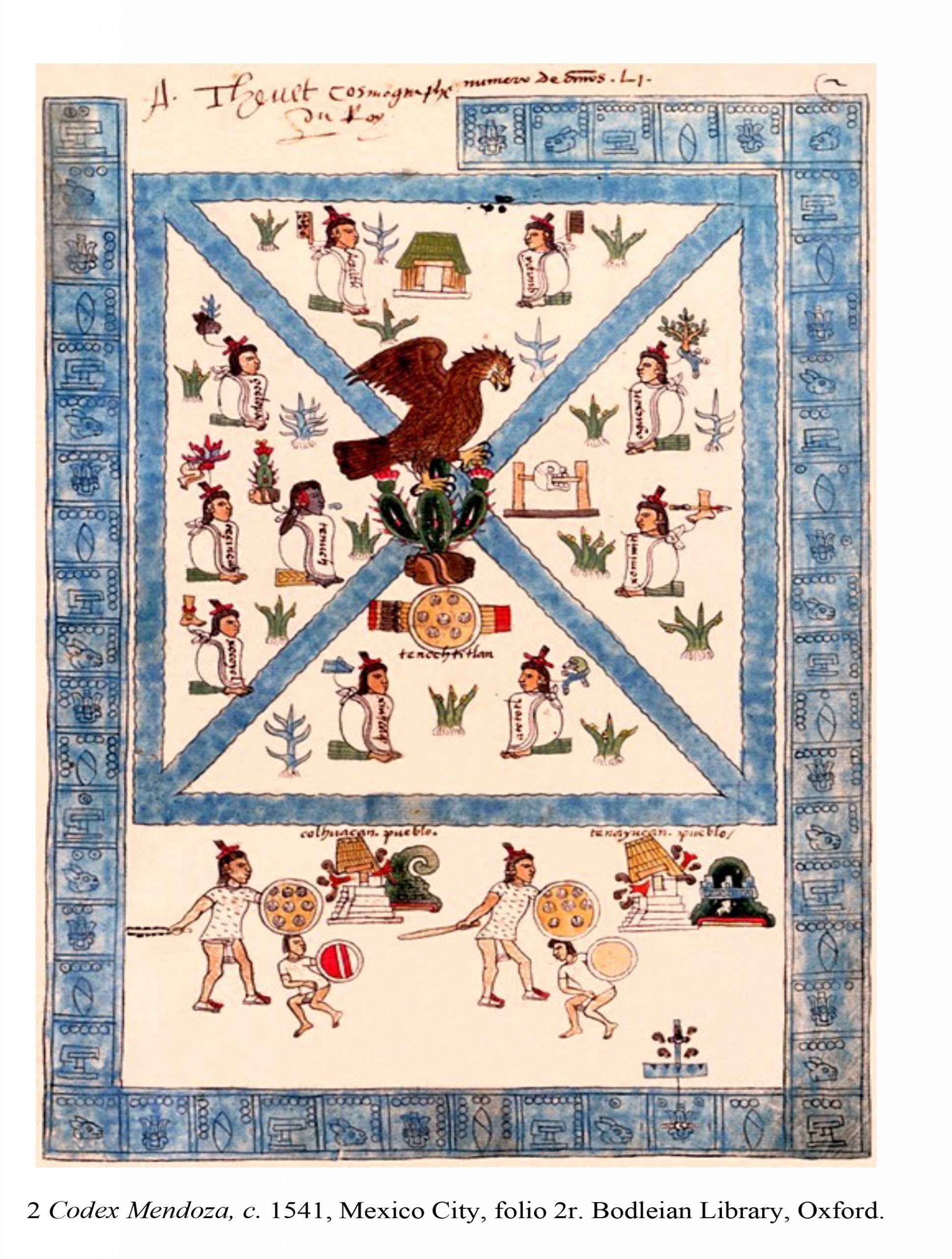The Codex Mendoza was produced in Mexico City in the 1540s by Nahua painter-scribes (tlacuiloque) and is glossed in detail and supplemented by commentary in Spanish. Having crossed the Atlantic in the 1550s, the Codex has functioned since the 17th century as a ‘Rosetta Stone’ for Mexican pictorial writing. It has been held at the Bodleian Library at Oxford since 1659. The manuscript is composed of 71 folios (leaves) with 72 pages of images and 63 pages of commentary. It is organized organised into three distinct sections. The first presents a history of the Aztecs from the founding of Tenochtitlan in 1325 to its fall in 1521. The second relates Aztec imperial geography to economics. The third section describes life in the Aztec world. While the work is customarily described as an illustrated manuscript, it can more accurately be considered an annotated collection of drawings. As a result of the complex, multi-step process of its manufacture, which engaged Nahua and Spanish participants and concepts, the Codex Mendoza is an inherently transcultural object.
Codex Mendoza
The Codex Mendoza (courtesy of Codex Mendoza, c. 1541, Mexico City, folio 2r. Manuscript Selden A.1., Bodleian Library, Oxford. Public Domain.)
Daniela Bleichmar
Further reading
- Berdan, F., and P.R. Anawalt (eds.) (1992) The Codex Mendoza, 4 vols. (Berkeley, CA: University of California Press).
- Bleichmar, D. (2015) ‘History in pictures: translating the Codex Mendoza’, Art History, 38 (4): 682–701.
- Bleichmar, D., and M. Martins (eds.) (2016) Objects in Motion in the Early Modern World (Chichester: John Wiley & Sons).
- Brotherston, G. (1995) Painted Books from Mexico: Codices in UK Collections and the World They Represent (London: British Museum Press).
- Gruzinski, S. (1992) Painting the Conquest: The Mexican Indians and the European Renaissance (Paris: UNESCO/Flammarion).
- Hamann, B.E. (2008) ‘How Maya hieroglyphs got their name: Egypt, Mexico, and China in Western grammatology since the fifteenth century’, Proceedings of the American Philosophical Society, 152 (1): 1–68.
- Instituto Nacional de Antropología e Historia (2015) ‘Introduction’, Codex Mendoza, https:// codicemendoza.inah.gob.mx/html/acerca. php?lang=english.





